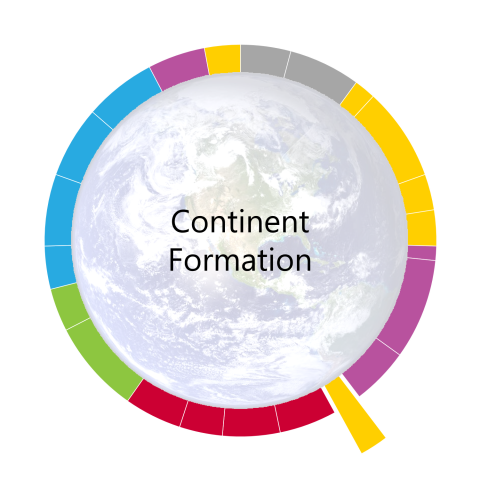
Phenomenon
When last we talked about the state of the Earth, it was a mostly watery world with very little land. When we look at maps that depict the age of different areas on the surface of the Earth, we see that there is a lot of variation across the globe.
Question
How did Earth's continents form?
Model Ideas
- Earth’s crust is broken into big chunks called plates.
- Plates can be moving away from each other (diverging), toward each other (converging), or sliding along each other (transforming).
- New oceanic crust forms at diverging plate boundaries. As oceanic plates diverge, magma from the mantle flows up, cools, forms new oceanic crust, and fills in the gap
- On average, oceanic crust is more dense than continental crust so when they converge the more dense plate (oceanic) subducts, or slides beneath, the less dense plate
- Over Earth’s surface, the amount of new crust forming must be in balance with the amount of old crust being subducted back into the mantle.
- New continental crust forms along converging boundaries where one plate subducts under another one. The action of subduction produces low-density magma which can rise to the surface and form new continental crust: volcanic islands, mountain ranges, and granite formations.
- Once low-density rock (continental crust) forms on Earth’s surface, it can’t sink again. It is stuck on the surface because of its density.
- The total amount of continental crust on Earth slowly increases over time.
Advanced Planning
You will need to make some color copies of maps. There is one lab in this unit that uses some equipment that may be present at your school but also requires specific rock samples that you will likely need to order the first year you teach this lab. See downloadable resources for a list of materials.
Download Resources
| Attachment | Size |
|---|---|
| Continent Formation Powerpoint vNov2021.pptx | 95.16 MB |
| All other resources for Continent Formation.zip | 24.99 MB |